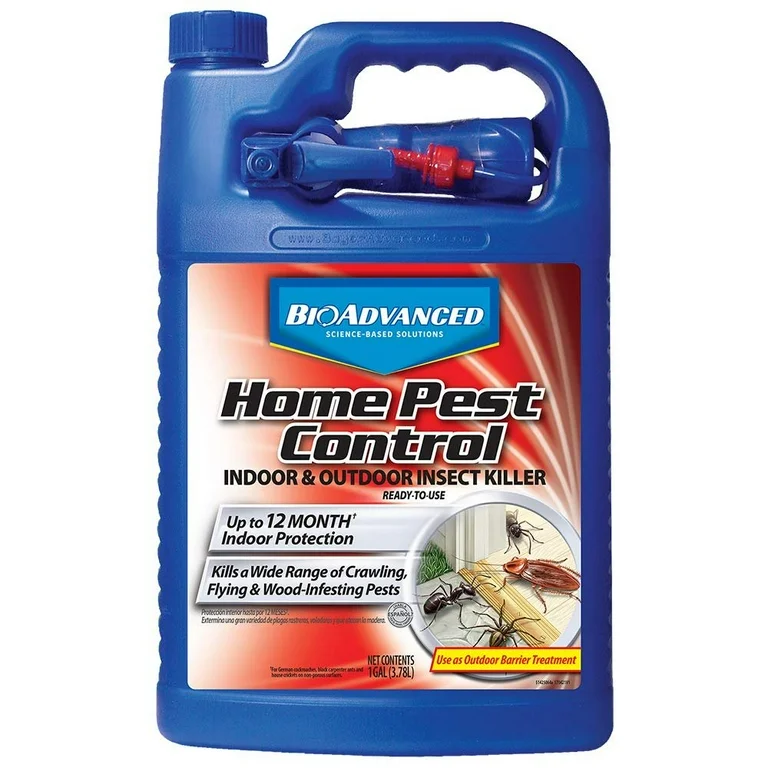Experienced A1 Exterminators Charlotte NC - Rapid and Trusted Solutions
Wiki Article
Bed Pest Therapy Break Down: Comparing Chemical Vs. Non-Chemical Solutions
In the world of parasite control, especially when handling the consistent concern of bed insects, the option between chemical and non-chemical therapy solutions can be a crucial one. Both strategies offer distinct advantages and drawbacks, influencing factors such as effectiveness, safety factors to consider, and general price. By analyzing the nuanced information of each method, a clearer understanding of which path to go after in dealing with a bed insect problem can be obtained.Effectiveness of Chemical Therapies
Chemical therapies for bed pest infestations have been widely recognized for their rapid and potent effectiveness in removing these bugs. When taking into consideration the performance of chemical treatments, it is vital to comprehend that they can provide a quick and comprehensive solution to a bed insect problem.Furthermore, chemical therapies have the benefit of providing recurring effects, indicating that they can proceed to eliminate bed pests even after the first application. This residual action is particularly advantageous in combating any kind of prospective re-infestations. In addition, the rapid action of chemical therapies can bring alleviation to people dealing with extreme bed bug invasions, enabling them to restore control of their home swiftly.
Safety Interest In Chemical Solutions
When making use of chemical remedies for bed pest therapy is making sure the safety of residents and the environment,One vital element that calls for careful consideration. While chemical therapies can be reliable in removing bed insects, they may position dangers if not handled appropriately. Among the main safety worry about chemical options is the potential injury they can create to human wellness. Direct exposure to particular chemicals used in bed insect therapies can cause breathing concerns, skin irritability, or various other negative reactions, especially in individuals with pre-existing conditions or level of sensitivities. Additionally, inappropriate application or dose of chemical pesticides can lead to poisonous deposits remaining in the treated location, posturing long-term wellness risks to passengers.Additionally, the environmental impact of chemical options is another significant factor to consider. Some chemicals utilized in bed bug treatments may be hazardous to valuable bugs, wild animals, and ecological communities if they seep right into the dirt or water systems. It is vital to use chemical therapies sensibly, adhering to safety standards, and thinking about much less toxic options to reduce these risks and make sure the efficient and secure administration of bed pest problems.
Benefits of Non-Chemical Methods
Thinking about the potential safety problems and environmental effect linked with chemical options for bed pest treatment, exploring non-chemical approaches presents an encouraging alternative with numerous unique advantages. Non-chemical therapies are eco friendly, as they do not add to air or water contamination, making them a lasting selection for bug control.Furthermore, non-chemical remedies can be efficient in targeting bed bugs, consisting of hard-to-reach areas where chemical treatments may not pass useful site through - A1 exterminators charlotte nc. Approaches such as heat treatment, vacuuming, heavy steam cleaning, and cushion coverings give thorough eradication without the usage of unsafe chemicals.
Limitations of Non-Chemical Treatments

Furthermore, non-chemical therapies typically require numerous applications to accomplish successful obliteration. This can be time-consuming and might not constantly ensure total elimination of all bed bugs and their eggs, particularly in covert or hard-to-reach locations.
Furthermore, the success of non-chemical therapies heavily relies upon appropriate execution and thoroughness, which can be testing for people without specialist know-how. Inadequate application of non-chemical approaches might result in insufficient eradication, leading to relentless problems and the need for additional treatments.
As a result, while non-chemical therapies have their advantages, it is vital to recognize these restrictions and consider them when establishing one of the most reliable strategy for managing bed insect invasions.
Cost Contrast: Chemical Vs. Non-Chemical Options
Given the resource limitations associated with non-chemical treatments, an essential aspect to review in the context of bed insect management is the price contrast in between chemical and non-chemical alternatives. In comparison, non-chemical therapies like heat treatment or steam can be extra costly, with prices varying from $1,000 to $6,000 for a whole home. While the preliminary expense of chemical therapies may seem lower, multiple therapies might be needed to fully eliminate the infestation, possibly raising the overall cost.Conclusion

Thinking about the potential safety and security problems and environmental effect linked with chemical remedies for bed insect treatment, discovering non-chemical methods provides a promising option with a number of unique benefits.Provided the restrictions linked with non-chemical therapies, a vital element to assess in the context of bed insect administration is the cost contrast between chemical and non-chemical alternatives. In comparison, non-chemical treatments like warmth therapy or heavy steam can be a lot more pricey, with costs ranging from $1,000 to $6,000 for a whole home. While the initial cost of chemical treatments might appear lower, multiple treatments might be required to completely eradicate the invasion, potentially boosting the general price.In verdict, when contrasting chemical and non-chemical bed bug treatment alternatives, it is crucial to consider performance, security, advantages, constraints, and expense.
Report this wiki page